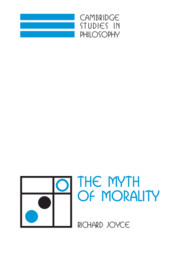1 - Error theory and motivation
Published online by Cambridge University Press: 22 September 2009
Summary
FAULTY FRAMEWORKS
When European explorers first interacted with cultures of the South Pacific, they found the islanders employing an unfamiliar concept: a type of forbiddenness called “tapu.” Europeans developed this into the familiar English term “taboo,” but what we mean by “taboo” is quite unlike what the Polynesians meant. (It is to signal this difference that I have chosen the Maori word “tapu” over “taboo.”) It is not the case, for instance, that “tapu” may be translated into “morally forbidden,” with accompanying understanding that the Polynesians have different beliefs from Europeans concerning which actions are forbidden. “Tapu” centrally implicates a kind of uncleanliness or pollution that may reside in objects, may pass to humans through contact, may be then transmitted to others like a contagion, and which may be canceled through certain ritual activities, usually involving washing. This is not a concept that we employ, though one may find something similar in ancient Roman and Greek texts.
If one of the European explorers had a penchant for metaethics, what would he say about the Polynesians' discourse? He would naturally take them to have a defective concept; no judgment of the form “φ is tapu” is ever true (so long as “φ” names an actual action) because there simply isn't anything that's tapu.
- Type
- Chapter
- Information
- The Myth of Morality , pp. 1 - 29Publisher: Cambridge University PressPrint publication year: 2001



